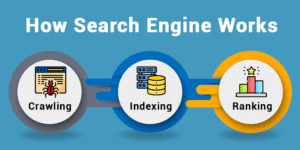Hackers are targeting WordPress sites more than ever in 2025. Learn how to protect your website with proven tools and strategies—from login security to firewalls and backups.
🔐 Why WordPress Security Matters in 2025
WordPress powers over 43% of all websites, making it a big target for hackers. A single vulnerability—like a weak password or outdated plugin—can lead to:
Website defacement
Stolen customer data
SEO penalties from malware
Total site loss if no backups
Security is not just for eCommerce or large businesses. Even a small blog or portfolio site is at risk.
🛡️ 1. Keep Everything Updated (Core, Plugins, Themes)
Hackers often exploit old code. You should always:
✅ Update WordPress core as soon as a new version is released
✅ Update all plugins and themes regularly
❌ Delete unused or outdated plugins/themes (even inactive ones)
Tip: Use tools like WP Toolkit, ManageWP, or Jetpack for centralized update management.
🔑 2. Use Strong Login Protection
Your admin panel is the #1 target for brute force attacks. Secure it with:
✅ a) Strong Username & Password
Never use “admin” as your username
Use a password manager to create unique passwords
✅ b) Two-Factor Authentication (2FA)
✅ c) Limit Login Attempts
Block brute-force bots using:
🔍 3. Install a Security Plugin
These plugins add real-time protection, firewalls, and malware scanning:
Most include email alerts, activity logs, and automatic threat blocking.
🧱 4. Use a Web Application Firewall (WAF)
WAFs block malicious traffic before it reaches your server. Popular options include:
✅ Cloudflare (free tier available)
✅ Sucuri WAF
✅ Astra Security
They help protect against:
SQL injections
Cross-site scripting (XSS)
Bot attacks
🗝️ 5. Change the Default Login URL
Most WordPress logins are at /wp-admin or /wp-login.php. Bots know that too.
Use plugins like:
To change your login URL to something like:yoursite.com/my-dashboard
🧾 6. Backup Regularly (Automated!)
If all else fails, a backup is your lifesaver.
Use trusted backup plugins:
Set it to auto-backup daily or weekly and store copies in:
Google Drive
Dropbox
Amazon S3
⚠️ 7. Disable XML-RPC If You Don’t Use It
XML-RPC is often used by attackers for brute force and DDoS.
Disable it unless you need it (Jetpack or mobile app users might).
Use:
🧠 8. Use SSL (HTTPS)
SSL encrypts the connection between your website and users.
Google rewards HTTPS in rankings
It builds trust with your visitors
Many hosts like Bluehost, SiteGround, or Namecheap offer free SSL certificates via Let’s Encrypt
Install it via hosting panel or plugin:
🔧 9. File & Directory Permissions
File permission settings should be strict:
wp-config.php→ 400 or 440Directories → 755
Files → 644
Avoid giving write access to everyone. It’s a common mistake on shared hosting.
👥 10. Manage User Roles Properly
If you have multiple users:
Give the least required access
Use roles like Editor, Author, Subscriber correctly
Review user list regularly for inactive or unknown accounts
🎯 Conclusion: Protect Your WordPress Investment
Your WordPress site is more than just code—it’s your brand, your income, your audience. In 2025, cyberattacks are more sophisticated than ever, but so are the tools to fight them.
By following the steps above, you can:
✅ Block 90%+ of common threats
✅ Keep your data and visitors safe
✅ Maintain SEO rankings and business reputation
📢 Need Help Securing Your Site?
Let me help you:
🔐 Audit your current security setup
🔄 Set up backups, SSL, and firewall
🚫 Remove malware or block bots







